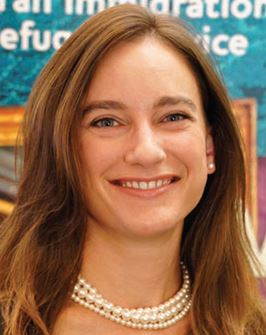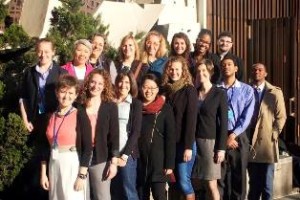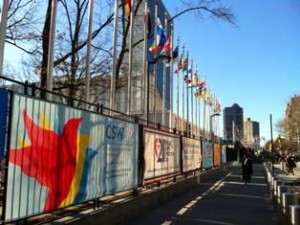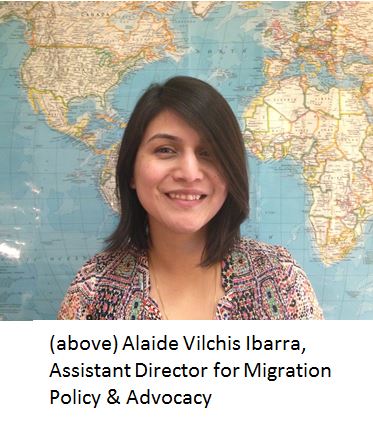Ryan P. Cumminig
A new United Nations-supported report offers tragic insight into the effects of the conflict in Syria. Since the conflict broke out four years ago, rates of poverty and hunger have skyrocketed, life expectancy has fallen by nearly 20 years, and nearly 10 million people (more than half of the population) have fled their homes in search of safety. At the end of last year, 82.5% of people in Syria were living in poverty, an increase from 64.7% in 2013. Perhaps more startling, at the end of 2014, 30% of families and individuals were living in what the report calls “abject poverty,” meaning that they could not afford even their most basic food needs.
There are a lot of reasons for such deep and broad poverty in Syria:
- Violence and the threat of violence have forced workers to flee their homes and jobs;
- Destruction of land and irrigation systems has made farming very difficult;
- Rising food prices have made it challenging for many people to afford their basic needs;
- Crop production was hit hard by both the conflict and the long drought in Syria. Wheat and barley production, for example, was down 25% just from 2013 to 2014;
- Even in places not affected as much by the drought, armed conflict has made it dangerous for farmers to return to their land or to take their products to markets.
We’ve known for a long time that war is a major cause of hunger and poverty. Threats to safety, the closing of markets, destruction of land and buildings – these sorts of things can have a long-lasting impact on the ability of people to feed themselves and their families. While we are not currently supporting projects in Syria, ELCA World Hunger is involved in other projects that help to reduce conflict and foster peacemaking.
One ongoing project is focused on equipping youth to be leaders for peace. With support from ELCA World Hunger, theWorld Student Christian Federation (WSCF) took twelve participants to Palestine in 2014, where they met with members of the Palestine Youth Ecumenical Movement to learn more about the realities of life in the midst of conflict there. At a larger meeting in Jordan with other members of WSCF, the group heard from youth from other countries in the Middle East and reflected on ways to promote justice and peace throughout the region. As one participant put it, the youth in attendance were “deeply transformed through the combination of friendship, solidarity, faith, and thinking together and are motivated to spread their voice and to take action.” In 2015, the group is gearing up for a General Assembly and is ready to “make a bigger impact for justice and peace in the world, motivated by God’s love.”
Sometimes, ending hunger means providing a community meal or helping people facing hunger get access to training and education. At other times, though, our work takes us to a different level, to a new root cause of hunger. Here, among the tangles of causes, the church’s call to end hunger intersects with other vocations of people of faith – to be peacemakers, to be reconciled and reconciling, and to be passionate seekers of justice. With faith and with each other, we, too, can “make a bigger impact” for justice, peace, and a world in which all are fed.
Ryan P. Cumming, Ph.D., is Program Director of Hunger Education for ELCA World Hunger. He can be reached atRyan.Cumming@elca.org.




 It’s so tempting for me, in my very modern way, to domesticate miracles – like reducing the feeding of the 5,000 miracle to an idyllic picnic or desert potluck. Not that thousands of human beings sharing isn’t miraculous. It is. In the four Gospels, there are six accounts of this miracle. Six! It must be too important a story for it to be about people sharing their lunches. Miracles are tricky that way.
It’s so tempting for me, in my very modern way, to domesticate miracles – like reducing the feeding of the 5,000 miracle to an idyllic picnic or desert potluck. Not that thousands of human beings sharing isn’t miraculous. It is. In the four Gospels, there are six accounts of this miracle. Six! It must be too important a story for it to be about people sharing their lunches. Miracles are tricky that way.

 For many Christians, Lent is a time of spiritual renewal and preparation for the resurrection of Jesus Christ. My preparation had to do with being a witness to the causes of migration in Central America. A few weeks ago, I traveled with ELCA leaders to Guatemala, Honduras and El Salvador to learn more about the reasons why children and families are fleeing their countries of origin and to better understand what happens when they are deported. What we saw and heard continues to stay with me – not only because the violence faced in these countries is worse than I imagined, but also because many of those we met stood with strength and boldness through incredibly difficult situations. We heard over and over how faith and belief that God is with them provides this strength.
For many Christians, Lent is a time of spiritual renewal and preparation for the resurrection of Jesus Christ. My preparation had to do with being a witness to the causes of migration in Central America. A few weeks ago, I traveled with ELCA leaders to Guatemala, Honduras and El Salvador to learn more about the reasons why children and families are fleeing their countries of origin and to better understand what happens when they are deported. What we saw and heard continues to stay with me – not only because the violence faced in these countries is worse than I imagined, but also because many of those we met stood with strength and boldness through incredibly difficult situations. We heard over and over how faith and belief that God is with them provides this strength.